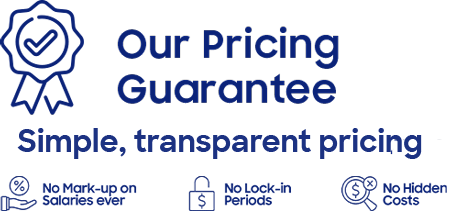How can I know if the referral is officially tagged under my name?
Upon submission of a referral, you will receive an email validation within 24-48 business hours if it’s valid or invalid. The referral will be tagged as invalid if the referral falls under the following circumstances:
- Candidates from recruitment-initiated activities such as, but not limited to, campus recruitment, job fairs, etc. within the last 6 months
- Referral endorsed by a search firm/third party provider within the last 6 months
- Referral who responded to Emapta’s job advertisements, regardless of the position they applied for and whether their applications had previously been processed or not (e.g. LinkedIn, Jobstreet, Monster, Indeed, etc.) within the last 6 months
- Referral who directly applied to Emapta (e.g. email, walk-in, etc.) within the last 6 months
- Referral initially referred by any other employee within 6 months of referral ownership
- Referral who were former employees or associates of Emapta or any of its clients
- Candidates who were hired for non-permanent employment or are currently employed on a non-permanent basis.
- Referrals who were submitted as referrals through other channels aside from the EMBuddy Portal (e.g. emailed to client or recruiter, etc.)
What happens if my referral is hired for a project-based or temporary position and is absorbed to a permanent position after 6 months, am I still eligible for the referral bonus?
Yes, you are eligible to get the referral incentive. The incentive will be processed one time following the completion of the conditions.
When is the cut-off for referral payout?
Below are the cut-offs per country. If your referral’s start date, 3rd month, or 6th month falls on the following cut-off, the incentive will be included in the said payout.
Philippines:
Cut-off: 11th to 25th of the previous month – 5th payout date
Cut-off: 26th of the previous month to 10th of the current month – 20th payout date
Sri Lanka:
Cut-off: 21st of the previous month to the 20th of the current month – 30th payout date
Colombia:
Cut-off: 16th to the 30th of the month – 5th payout date
Cut-off: 1st to the 15th of the month – 20th payout date
Macedonia:
For confirmation
How can I ensure that I will receive the referral incentive?
The referral incentive will be credited to your account as long as you and your referral are actively working during the expected payout date.
When and where can I dispute a referral?
You can send an email to [email protected]. You can only file a dispute within 30 calendar days from the referral’s start date.
What roles can I offshore?
Whether it’s business administration, software development, finance, marketing or sales support, Filipino talent are likely to be a perfect fit to your team.
Check out the different industries we work with and get a glimpse of the kind of roles and teams we have built for our customers.
How long does it take to setup an offshore team? / How soon can we get started?
Our sourcing process to onboarding typically takes as little as 3-6 weeks. We assume you’ll be choosing talent whom we have head hunted and are currently employed, thus, they will also have to render notice period of up to 30 days. If you require a sooner start, we will focus on resources that are more readily available.
Can outsourced talent perform the tasks at the level that I require?
The short answer is: yes. The Philippines, Malaysia, Sri Lanka, Macedonia, and Colombia are rife with outsourcing and nearshoring talent, catering to almost any industry that can be outsourced, from finance to healthcare, and more.
We go out into the market to recruit specifically for your requirements once we have a full understanding of the role, the tools required to perform the role, and how the role is managed and fit into your organization.
Because you are selecting the personnel, you will have the opportunity to interview the candidates to determine if they are aligned to your company culture, we can administer a wide range of assessment tests from practical skills, deductive reasoning skills to personality tests, and we customize the interview process based on your best practices.
Will the personnel be shared with other clients?
While the employee(s) will be legally employed under Emapta, they will be exclusively working only for you and your organization. We put your company/brand first and treat your employees as an extension of your company in the Philippines – while Emapta is their support network on the ground. We have found this to be a key success factor for high-performing teams and a great contributor to long-term employee retention.
What time zone are you in?
Emapta is located in the Philippines, which is UTC +8, but our teams work in different shifts, 24/7.
You decide when you want your team to work, this could be your countries’ office hours or alternative hours to provide after hour coverage.

Start transforming your business
So what type of talent does your business need?
We can help you assemble exactly the team you need. From back office support staff right up to industry-specific specialists, just let us know your requirements and we can start to build Your Team, Your Way. Drop us a note with any questions you have or call us today.
We’d love to speak with you about how Emapta can support your business.
-
Philippines
-
Australia
-
United States
-
New Zealand
-
Canada
-
United Kingdom
-
Singapore
-
Colombia
-
Sri Lanka
- Billing & Accounts
-
Malaysia











